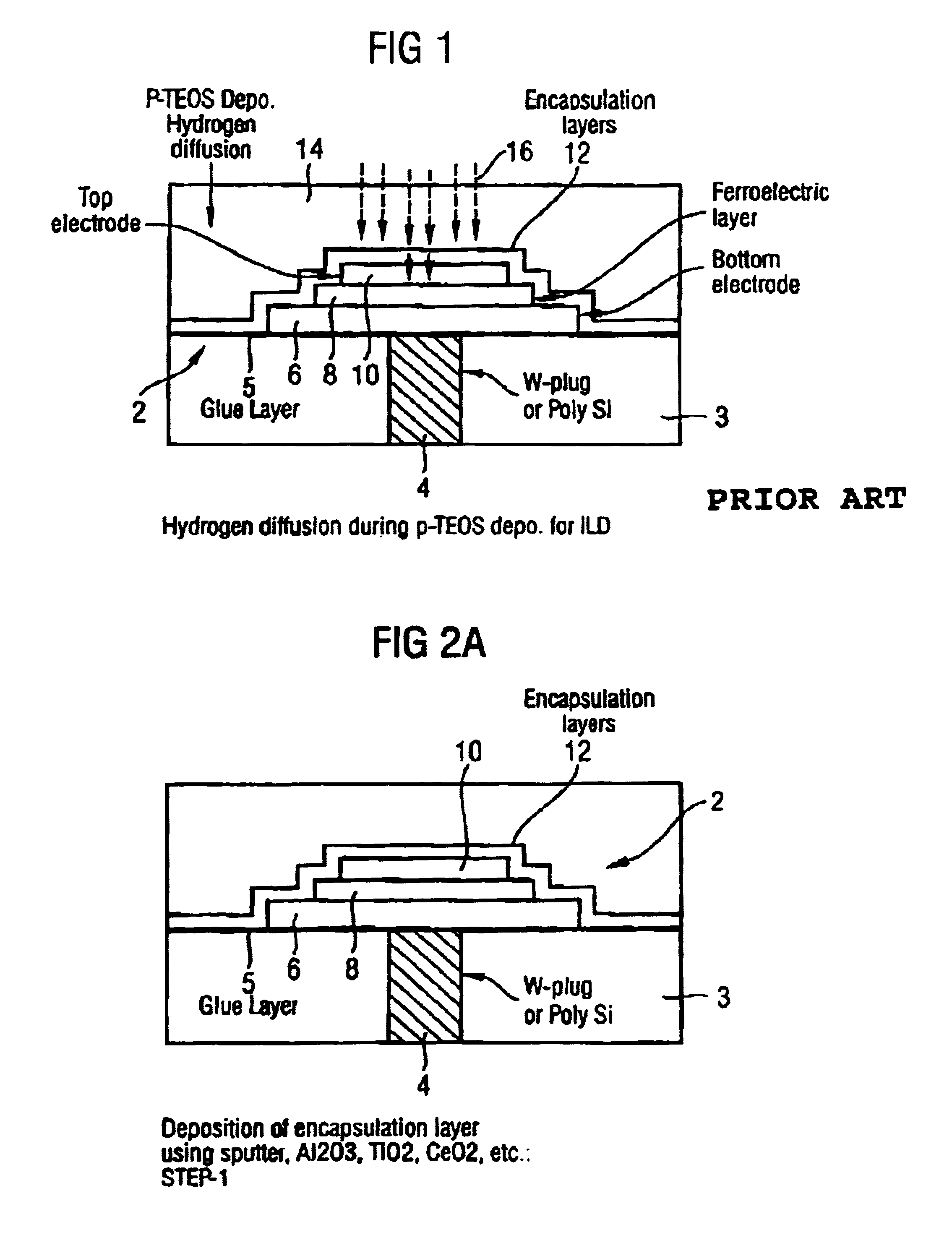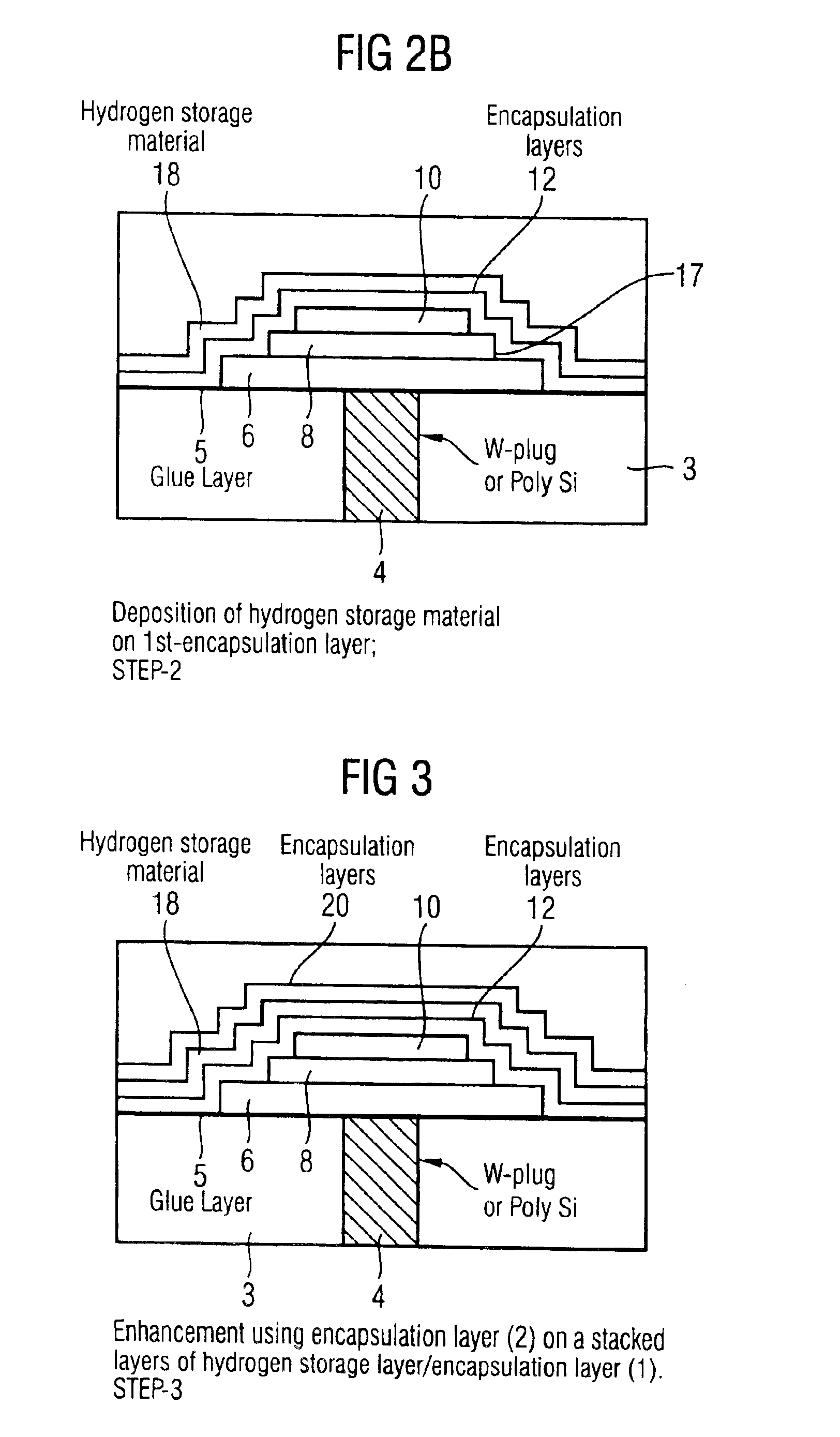Device for inhibiting hydrogen damage in ferroelectric capacitor devices
a technology of ferroelectric capacitors and devices, which is applied in the direction of capacitors, semiconductor devices, electrical apparatus, etc., can solve the problems of serious degradation of the ferroelectric performance of the capacitor, sintering damage to the capacitor, and the inability to inhibit the hydrogen diffusion of the capacitor during processing, so as to avoid or reduce the damage to the capacitor during processing. , the effect of preventing the diffusion of hydrogen into the ferroelectric layer
- Summary
- Abstract
- Description
- Claims
- Application Information
AI Technical Summary
Benefits of technology
Problems solved by technology
Method used
Image
Examples
Embodiment Construction
[0027]Conventional ferroelectric capacitors 2 such as that shown schematically in FIG. 1, comprise a substrate 3, a contact plug 4 extending through the substrate 3, a glue layer 5 applied to the substrate 3, a bottom electrode 6 on said glue layer 5, a ferroelectric layer 8 of material, such as PZT, on said bottom electrode 6, and a top electrode 10 on said ferroelectric layer 8. One or more encapsulation layers 12 cover the capacitor 2. The plug 4 may be formed of, for example, tungsten or polysilicon.
[0028]The capacitor is covered with one or more interlayer dielectric layers 14, normally plasma-Tetraethyl Orthosilicate (p-TEOS), and connection to the top electric is achieved by etching a window (not shown) through the interlayer dielectric layer(s) 14 and filling the window with a metal filler (not shown). During the deposition of the p-TEOS layer(s) 14, hydrogen ions 16 are released which diffuse through the encapsulation layer(s) 12, into the top electrode 10 and the ferroelec...
PUM
 Login to View More
Login to View More Abstract
Description
Claims
Application Information
 Login to View More
Login to View More - R&D
- Intellectual Property
- Life Sciences
- Materials
- Tech Scout
- Unparalleled Data Quality
- Higher Quality Content
- 60% Fewer Hallucinations
Browse by: Latest US Patents, China's latest patents, Technical Efficacy Thesaurus, Application Domain, Technology Topic, Popular Technical Reports.
© 2025 PatSnap. All rights reserved.Legal|Privacy policy|Modern Slavery Act Transparency Statement|Sitemap|About US| Contact US: help@patsnap.com



